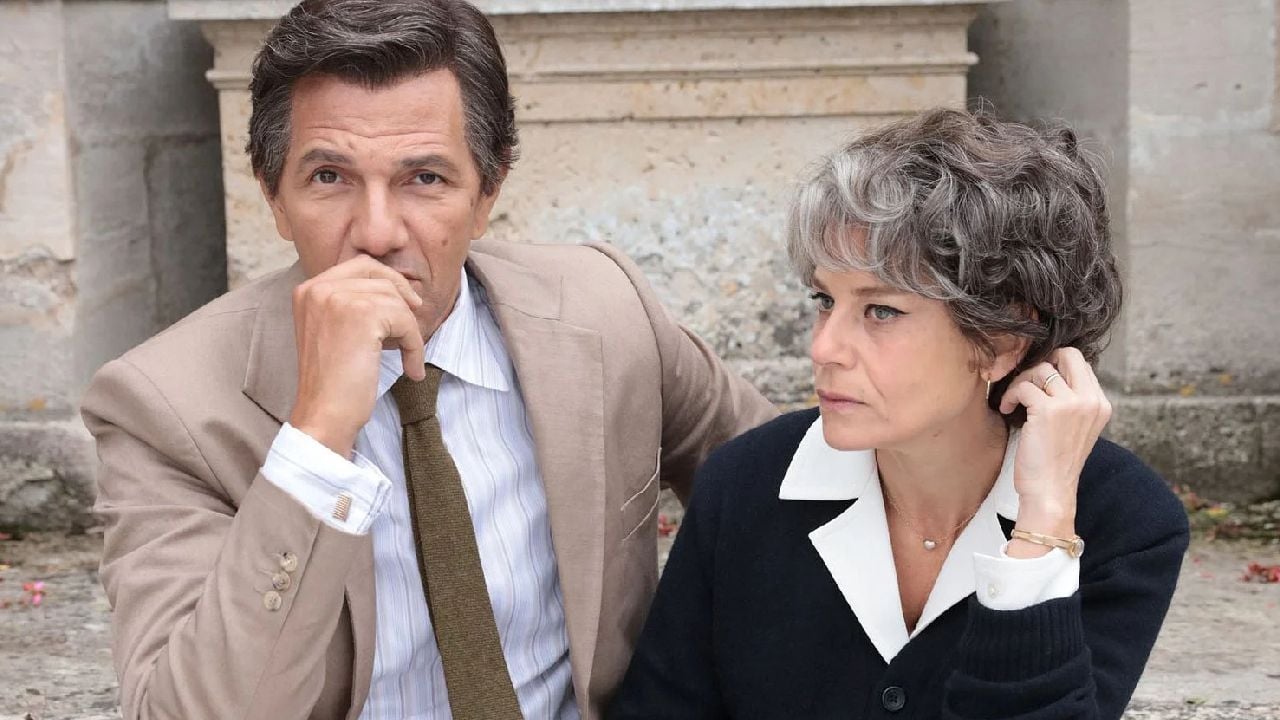Throughout his life, the director has been a giant: he has produced more than 127 audiovisual works, from black and white to 3D films, the latest in 2019.
How to describe an entire continent in a few lines? It is the challenge we face now that death puts an end to the work of a film giant like Jean-Luc Godard.
It had a long life, 91 years, and produced a lot. If we consult the IMDB movie site we will find more 127 audiovisual works associated with your name. The challenge of embracing the continent is posed both by the extent of the work and by its diversity. Godard he has dedicated his work to cinema, but also to video and television. He has made black and white, color and 3D films. He worked on celluloid, video and digital. He was one of the crusaders of the so-called “policy of the authors”, characteristic of new wave French, but ended up defending the abolition of paternity. He begins with a dialogue with North American cinema and ends up making non-narrative films, non-fiction expedients on life, politics, the arts and, of course, on cinema itself.
Godard outlived all his comrades in nouvelle vague (Francesco Truffaut, Claude Chabrol, Jacques Rivette and Eric Rohmer). He didn’t make the group’s first feature film. Truffaut had already debuted with The misunderstood (1959) and Chabrol, in front of him, with In the claws of addiction (1958). However, as the critic and historian Jean Tulard recalls, the true manifesto of the nouvelle vague is harassed, from 1960, a film that astounded everyone. Or upset.
Read it too
Starting from a screenplay by Truffaut, Godard reverses the cinematic form with sharp camera cuts and long shots on the streets of Paris. The freedom with which this unlikely couple follows a small bandit (Jean-Paul Belmondo) and the American girl who sells newspapers and seeks an adventure (Jean Seberg) is remarkable. The sharp cuts in the narrative have struck traditionalists as technical errors. Mistake. Godard created and what he invented has been incorporated into the language of modern cinema. Indeed, everything in this film breathes modernity – from the rhythm of the scenes to jazz music, the freedom with sex and behavior in general, the cold manners of Belmondo and the relaxed tenderness of Seberg, unforgettable with his intense eyes and short hair. . . It was a whole program for an era of protest and aspiration for freedom that would culminate in May 1968 in Paris. harassed he has traveled the world and influenced various cinematographies, including the Brazilian one.
Actress Jean Seberg, from ‘Acossado’, with Godard in Paris, in the 1960s Photo: AFP
Self Godard he was the most avant-garde of the whole nouvelle vague, he was also the most political. When his companions closed their eyes a little on the Algerian question, which divided France at the time of the Algerian War (1958-1962), Godard made committed films such as The Carabinieri (1962) and Le Petit Soldat (1963). Involved, but not didactic.
Around the same time, he was releasing a hit comedy like A woman is a woman (1961) and what, for many, is his most beautiful and touching film, live your life (1962), the moving story of Nana (Ana Karina) in twelve frames, from her work in a magazine to prostitution. There is a reference to Carl Dreyer’s Joan of Arc, whose images move Nana and the viewer.
Would it be the coolest of Godard’s films? There are controversies, because there is contempt (1963). Based on the novel by the Italian Alberto Moravia, it is considered to be one of Godard’s most dazzling works. Brigitte Bardot, at the height of beauty, in front of Michel Piccoli. I am husband and wife in a sinuous plot, shot on the island of Capri, in which love gives way to its opposite, coldness. And contempt, as the title says. The visual impact of this color work is impressive. the great German director Fritz Lang works as an actor in the work.
Since the intimate and the social are present in Godard’s work (they communicate and are not mutually exclusive), in 1967 he made another fundamental film, the Chinesewhich clearly prefigures May 1968 with its discussion on the directions of political contestation and Maoism.
At the end of the 1960s, the militant Jean-Luc, with Jean-Pierre Gorin, founded the Maoist group Dziga Vertov. One of the leaders of the so-called “politics of the authors”, del Cahiers du cinema, Godard now embraces the thesis of a collective and militant cinema. The name is taken from the director of Camera-Eye, Vertov (1896-1954), one of the spearheads of the Soviet avant-garde. For Gorin and Godard, the problem was not making “political films”, but making political films politically. They refuse to behave like cinema “professionals”, transforming themselves into militants of the revolution. The question becomes “for whom” and “against whom” cinema is made.
The director in 1988, during the Cannes Film Festival Photo: AFP
of this stage is east wind (1970). An essay film, prototype of the busiest time of Godard’s cinema. It discusses the possible paths of revolutionary cinema and the socialist alternative of social organization. Glauber Rocha participates in one of the sequences of the film, staging the crossroads of cinema in the so-called Third World.
Already History (s) of cinema it’s your break of maturity. Filmed between 1988 and 1998, on video, it reveals Godard’s concern not only for the direction of cinema, but for the history of civilization itself. In the 1960s, François Truffaut noted that Godard’s first 12 films do not contain the word “past”. As if the director was only looking ahead. In History (s) of cinema, on the contrary, the gaze withdraws to contemplate the density of history and, in a certain sense, its tragedy.
Like his biographer Antoine de Baecque (Godard, biography, Grasset, 2010, 940 pp.), These dates mark both a personal and historical crossroads. Godard turns 60 and cinema, by invention, celebrates its centenary. History changes abruptly with the end of communism and the Cold War. The leftist, the revolutionary who had predicted May 1968 a year earlier, with the Chinese, sees capitalism win the game. What will come next? Godard feels that the moment of historical consciousness is imposed. Hence this impressive, contradictory, baroque and disconcerting work, lasting 4h25 minutes, divided into eight chapters. At the beginning of one of them, on the screen you can see the dedication: the Giovanni Cassavete and Glauber Rocha.
Since then, Godard has not stopped reinventing himself, in non-fiction films and always linking the historical weight to the contemporary – such as Forever Mozart (1996), Praise of Love (2001), Our Music (2004), Cinematic socialism (2010) up to the extraordinary goodbye to the language, your 3D experiment. This aesthetic and political restlessness, unchanged in a man then nearly 85, may not have contributed to making him more popular with the average viewer, who goes to the cinema in search of entertainment. But he consolidated his philosophical position of those who think about cinema using cinema itself as a tool for reflection.
There would still be the disturbing Word and image (2019). Word and image, translation of The livre of imagein the French original.
It is very enlightening, for example, to see that the film begins with a sort of “ode to the hands” and not to thought. However, this is only an apparent contradiction, since, as they say, man is that animal capable of “thinking with his hands”. So does the painter (painting is a “mental thing”, as Leonardo said), the sculptor, the architect. But also the writer and, of course, the director. Godard thinks with his hands – and with his eyes, ears, brain – manipulating the images, sounds and thoughts of other people, altering them and putting them in a position for a general reflection on the world and, in it, on people and on what’s this.
Godard juxtaposes many films, including his own, with documentary scenes. Many scenes of war and suffering. The stories of the 20th century, and the 21st century, are bloody. Civilization certainly did not triumph and cinema records this failure.
The “Arab world” holds a prominent place for a long time in the final part. As proof that the old question “East and West” comes back strongly, as we all know. “East is east and west is west, and they will never meet,” wrote Kipling at the height of colonialism. What has changed?
This is just one of the many questions posed by this film that talks about the struggle between civilization and barbarism and finds a privileged but not idealized place in art. Remember the same sentence of Godard: “culture is the norm and art is the exception; it is the norm to kill the exception”.
This art, increasingly distant from a meticulous narration, from its small stories with a beginning, a half and an end, can sometimes be an obstacle for the viewer, accustomed to the linearity of television and commercial films. But his guerrilla disposition can also be seen in another way, as a challenge and encouragement. And, after all, its aesthetic fragmentation is not that far from our daily experience. During a day we read newspapers, listen to or watch the news, read a novel and the pages of a book of essays, write, answer the phone, answer e-mails and zaps, listen to music, work on various tasks, talk to others, we can watch videos and a film before going to bed. This does not mean that our brains collapse, because it has structures for ordering chaos. The day could have been fragmented into a thousand different tasks. But afterwards we have the feeling that everything was linear and in order. Why then should we be helpless in front of a Jean-Luc Godard? Just try any of the chapters of this magnificent work, always available to anyone who has cinema as an art of invention, reflection and knowledge of the world and of oneself. We owe all this to Godard.
Source: Terra
Emily Jhon is a product and service reviewer at Gossipify, known for her honest evaluations and thorough analysis. With a background in marketing and consumer research, she offers valuable insights to readers. She has been writing for Gossipify for several years and has a degree in Marketing and Consumer Research from the University of Oxford.






